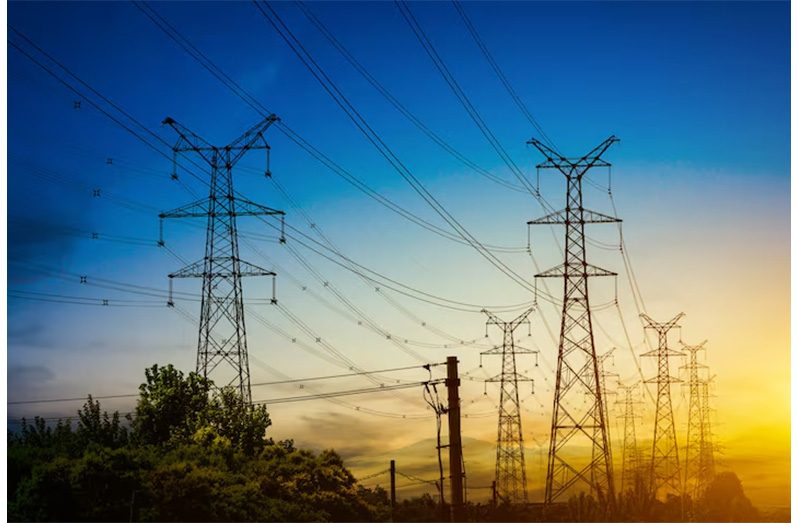VICE President Dr. Bharrat Jagdeo says the government is implementing a series of energy initiatives which are aimed at improving power distribution and boosting renewable energy in remote regions.
During a recent press conference at Freedom House, Robb Street, Dr Jagdeo noted that the cabinet has already approved the creation of a loop system designed to enhance the efficiency and reliability of the national power grid.
“The big transmission main project to Berbice, that’s being worked on aggressively. You recall we awarded a contract for over 30 megawatts of solar power in regions two, six and ten. Those are far advanced. We intend to expand the provision of power in the Amerindian communities in these areas,” the Vice President said.
The government has made extensive efforts to improve electricity access in the country’s hinterland regions through initiatives like the Hinterland Electrification Company Inc. (HECI) and the expansion of solar energy. Key developments include the installation of solar farms in towns like Mabaruma and Mahdia, the commitment to 24-hour electricity for every village, along with other initiatives.
It was reported in July that more than 37,000 households in Amerindian, riverine, and remote communities are now enjoying access to electricity for the first time.
This is due to the Solar Photovoltaic Home Energy Systems (SHE) project, which was relaunched by the People’s Progressive Party/Civic (PPP/C) in July 2023. Although the target was to benefit 30,000 households, it has exceeded that number by over 7,000.
The villages targeted for the government’s solar distribution project were located in areas accessible only by boat, where residents encounter significant challenges transporting diesel or fuel for their generators.
In addition, the cost of diesel in off-grid villages can be up to three times the price of diesel in Georgetown, making it difficult for families to afford. Solar panels proved to be a clean, renewable and cost-effective solution.
The Government of Guyana, through the HECI, continues to make significant strides in expanding stable and reliable electricity access to remote communities. Under the Hinterland Electrification Programme, free and renewable energy is being introduced to villages across the country, enhancing the living conditions of thousands of residents.
Chief Executive Officer of HECI, Horace Williams, in March of this year, outlined the company’s plans to accommodate larger energy systems, with a primary focus on bridging the electricity gap between the coast and hinterland regions.
“Plans are to improve access for some households receiving electricity from solar systems that are currently limited to primary lighting and small appliances. Households want to get to the stage where they can use large appliances in their homes,” Williams stated.
Prime Minister, Brigadier (Ret’d) Mark Phillips, who has oversight of the energy sector, reaffirmed the government’s commitment to addressing energy disparities, emphasising that electricity is a key driver of national development. As a result, several Amerindian villages, including Annai and Karasabai in Region Nine, have already begun reaping the benefits of these transformative efforts, ensuring long-term sustainability and improved quality of life.
With a vision to provide equal opportunities for all Guyanese, the government aims to target 30,000 households within the hinterland region, ensuring access to safe and renewable energy. Upon completion, the Hinterland Electrification Programme is expected to generate a total of 4.8 megawatts of electricity, significantly improving the standard of living for thousands of residents.
This initiative represents another step in the government’s continued efforts to reduce disparities between coastal and hinterland communities, fostering greater inclusion and development for all.



.jpg)








